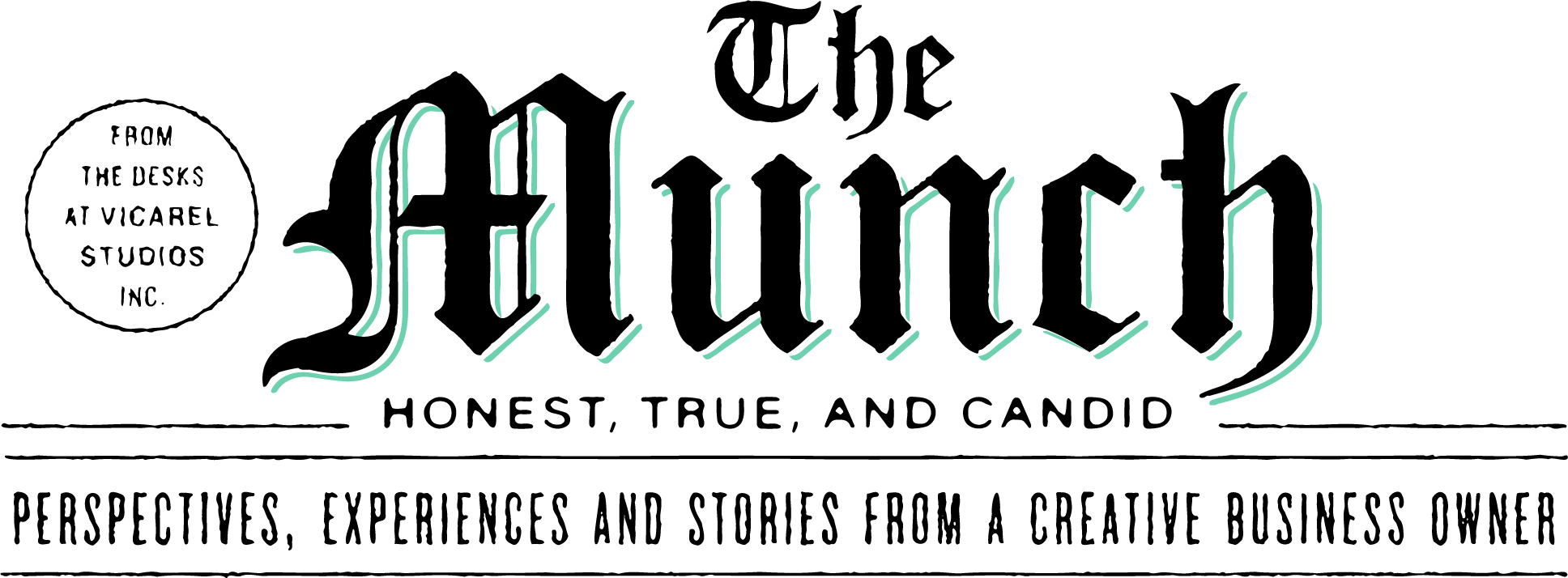Be sure to do these 7 things when writing emails: email etiquette for creative business owners.
Vol. 096
Be sure to do these 7 things when writing emails: email etiquette for creative business owners.
If you email too informally too early, you may lose your credibility. A $5,000 and a $50,000 client communicate differently. How do you want to be perceived?
Email etiquette might be taught in business school, but it certainly wasn’t taught in graphic design school.
When sending an email, consider these 7 important tips —the last one is my favorite, and maybe the best way to save time..
Lay off the exclamation points
Have a Call To Action (CTA)
Don't feel like you need to respond immediately
Clarity and conciseness
Proofread
Don’t reply-all unless it’s necessary.
Never send an open ended meeting invite.
Applying these will not only help with your productivity, but they will help your client and impress upon them that you are organized and know how to communicate and run your business.
1) Lay off the exclamation points
Hey, this sounds awesome! I’d love to chat further!
Let me know when you’re free, and we’ll get something set up ASAP!
Thanks!
…don’t be that person. No one will take you seriously.
I know you’re excited about the project. Your client probably is too.
However, when you send emails laden with exclamation points, you can come across as naive, and inexperienced.
Your prospective client doesn’t want to hire a highschool cheerleader, they want to hire a professional. So, write like one.
One, maybe two exclamation points MAX per email is okay. But truly, try to pull back. Not every email needs one.
2) Have a Call To Action (CTA)
Your email should have a purpose. “Please provide feedback”, “Can you meet at 9am on Monday”, “Please send over that document.”
We’re not here to make friends, we’re here to get shit done. Your emails should be clear about why they’re being written, and should have an obvious desired goal, action or outcome.
Send over 2-3 days, and times of availablity. Or, use calendly or Boomerang to scheudle for you.
3) Don't feel like you need to respond immediately
Don’t treat email like an SOS call.
I can say with 99% confidence that your client or prospect will be okay if you take a day to respond to their email.
I try to treat my email priority like this:
Current clients: respond within 1 day
New project opportunities: respond within 1-3 days.
Other: When I have time
You wanna know a sure way to burn out? Respond to every email as soon as it hits your inbox.
Use features like “inbox pause” or Boomerang to manage your emails.
Unless I’m waiting on something time sensitive, I often will only check my email in the morning, mid-day and then end of day. And that’s more than enough!
If I check my email in the morning and have an email that’s not time sensitive, I may respond to it at that moment, but will use Boomerang to schedule the email to go out at the end of the day or even the next morning.
I refuse to perpetuate the idea that I’m always available to my email and my clients. I’m not! I’m not an employee. I’m a consultant.
We prioritizing getting beautiful work created, not emails talking about meetings. I make it clear to my clients that if I’m a bit slow to respond, it’s because I’m busy doing the work.
4) Clarity and conciseness
I have a tendency to ramble.
I have a lot to say, and I love talking… and writing. But email is not the place for that.
It’s important to get straight to the point, don’t elaborate on unnecessary details, and don’t be redundant.
People want to mitigate tasks, not receive more tasks — your email should clarify the solution to a problem, not be an unnecessary task or additional problem.
5) Proofread
I recently sent out a proposal for a $18,000 mural for a school. This was a beautiful presentation with a link that went to an estimate…and, because I didn’t proofread, I didn’t see that the estimate was linked to a Dispensary rebrand proposal. Nothing like chatting with teachers and unintentionally sending them to a weed project estimate.
Don’t be like me.
Be sure to read back through your email, even quickly, before you send it.
Proof reading ensures that you’re saying what you want to say, providing attachments and links if necessary, and you don’t have any glaring typos or huge grammatical errors.
Proof reading helps you reduce imperfections and doubt in your work / abilities.
If everything you do leading up to/during your project is streamlined and professional, your client wouldn’t have any reason to expect anything less when it comes to executing their work.
6) Don’t reply-all unless it’s necessary.
Have you ever been on a mass email chain that’s irrelevant to you?
It’s the worst.
Don’t be that guy or gal.
Send emails only to those people who need to be included. ‘Nuff said.
7) Never send an open ended meeting invite.
This is a biggie.
Email can be a disastrous timesuck, because of how much back and forth there can be. If you’re not careful, you’ll start sending and responding to emails more than you actually do creative work.
One of the surest ways to save time is to reduce the back and forth on setting up calls or meetings. My first suggestion is to use Calendly — this is how I do it.
If you don’t use Calendly, then be sure to send 2–3 windows of availability, as well as a a request for them to provide additional days if there’s a conflict.
For example: “Hello, are you available to meet Monday at 9am or 11am, or Tuesday at 9am? If not, please provide me with a couple of times that work for you, and I will send an invite for a meeting time that works for us both.”
This approach alleviates the back and forth on coordinating days and times, and reduces that correspondence to one single email.
Time is money, folks.
When it comes to email etiquette, things will evolve as your relationship with your client evolves.
I almost always start out very professionally, and then allow for humor, or more informal vernacular to evolve naturally based on my client.
Happy (professional) emailing!
Cheers,
Adam

